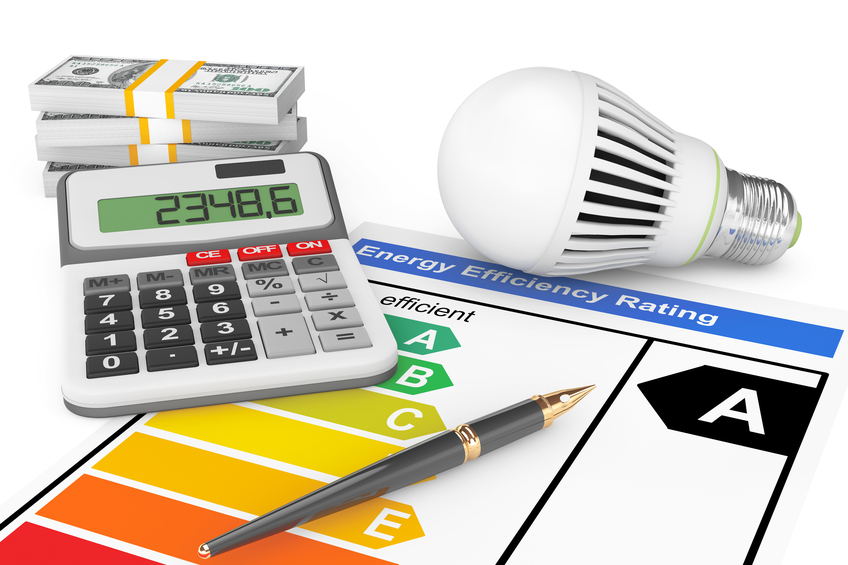Georgia Electrical 15 PDH Discount Package 2
Courses in this Package
Basic Electrical Theory (E04-001)
Basic Direct Current (DC) Theory (E03-001)
Introduction to Transformers (E05-013)
Electrical Test Instruments and Measuring Devices (E02-003)
LED Troffer Retrofit Lighting and Controls: Best Practices (E01-011)

This online engineering PDH course introduces basic electrical concepts. It starts by explaining the concept of the electrostatic force and the first law of electrostatics. It defines the basic electrical terminology and its corresponding units of measure. It continues to describe the methods of producing electricity. It also describes the principle of magnetism and magnetic circuits. Finally it provides a list of basic electrical symbols used to read and interpret electrical system diagrams and schematics.
This 4 PDH online course is applicable to electrical and computer engineers, design and construction personnel, technical staff and facility operators who are interested in gaining a better understanding of the theory of electricity.
This PE continuing education course is intended to provide you with the following specific knowledge and skills:
- Understanding atoms and their forces
- Distinguishing electrical components conductors, insulators and resistors
- Understanding voltage and current
- Learning the units of electrical measurements
- Identifying the methods of producing voltage
- Understanding magnetism and magnetic circuits
In this professional engineering CEU course, you need to review Module 1, "Basic Electrical Theory" of the Department of Energy Publication DOE-HDBK-1011/2-92, "Electrical Science".
Upon successful completion of the quiz, print your Certificate of Completion instantly. (Note: if you are paying by check or money order, you will be able to print it after we receive your payment.) For your convenience, we will also email it to you. Please note that you can log in to your account at any time to access and print your Certificate of Completion.

This online engineering PDH course introduces the basic concepts of direct current (DC). It starts by describing the various types of DC sources. It explains the relevant DC circuit terminology. It demonstrates a series of basic DC circuit calculations by providing pertinent examples. It introduces conventional and electron flow and voltage polarity as well as defines Kirchhoff's Laws. Finally it discusses DC circuit analysis and faults.
This 3 PDH online course is applicable to electrical and computer engineers, design and construction personnel, technical staff and facility operators who are interested in gaining a better understanding of the theory of direct current.
This PE continuing education course is intended to provide you with the following specific knowledge and skills:
- Identifying DC sources
- Familiarizing with DC circuit terminology
- Performing DC circuit calculations
- Understanding voltage polarity and current direction
- Knowing Kirchhoff's laws
- Analyzing DC circuits and identifying circuit faults
In this professional engineering CEU course, you need to review Module 2, "Basic DC Theory" of the Department of Energy Publication DOE-HDBK-1011/2-92, "Electrical Science".
Upon successful completion of the quiz, print your Certificate of Completion instantly. (Note: if you are paying by check or money order, you will be able to print it after we receive your payment.) For your convenience, we will also email it to you. Please note that you can log in to your account at any time to access and print your Certificate of Completion.

This online engineering PDH course describes the basic concept, function, types, and the different components of electrical transformers.
A transformer is an electrical equipment that transfers energy from one circuit to another by electromagnetic induction. They are often used to convert between high and low voltages (step-up or step down). Transformers and their components vary depending on the application and are available in several different configurations.
This 5 PDH online course is applicable to electrical and mechanical engineers, maintenance personnel and other technical staff who are interested in gaining a better understanding of transformers.
This PE continuing education course is intended to provide you with the following specific knowledge and skills:
- Understanding the function of transformers and their physical characteristics
- Familiarizing with the different components of transformers
- Learning how to identify a transformer as step-up or step-down and state the current ratio of a transformer when given the turns ratio
- Learning the mathematical relationship between the power in the primary and the power in the secondary of a transformer
- Understanding the basics of the different types of transformers
Upon successful completion of the quiz, print your Certificate of Completion instantly. (Note: if you are paying by check or money order, you will be able to print it after we receive your payment.) For your convenience, we will also email it to you. Please note that you can log in to your account at any time to access and print your Certificate of Completion.

This online engineering PDH course describes electrical measuring devices such as voltmeters, ammeters, ohmmeters and wattmeters. It also describes test equipment such as multimeters and meggers. It discusses the electrical parameters measured and the principles of operation of common instruments.
This 2 PDH online course is applicable to electrical and computer engineers, design and construction personnel, technical staff and facility operators who are interested in gaining a better understanding of electrical test instruments and measuring devices.
This PE continuing education course is intended to provide you with the following specific knowledge and skills:
- Understanding meter movements
- Learning about the various electrical measuring devices (voltmeters, ammeters, ohmmeters and wattmeters)
- Learning about the various electrical test equipment (multimeters and meggers)
In this professional engineering CEU course, you need to review Module 14, "Test Instruments and Measuring Devices" of the Department of Energy Publication DOE-HDBK-1011/2-92, "Electrical Science".
Upon successful completion of the quiz, print your Certificate of Completion instantly. (Note: if you are paying by check or money order, you will be able to print it after we receive your payment.) For your convenience, we will also email it to you. Please note that you can log in to your account at any time to access and print your Certificate of Completion.

This online engineering PDH course provides basic information on LED troffer retrofit lighting and controls best practices.
Lighting use constitutes about 20% of the total source electricity consumption in commercial buildings. Most of the lighting in U.S. commercial buildings is provided by fluorescent troffer ceiling fixtures. There are currently over 350 million installed troffers using more than 65 million kWh (the annual energy usage of 6 million U.S. homes).
Retrofitting these fluorescent troffers to light-emitting diode (LED) sources offers the potential for enormous energy savings. As of 2015, only 5% of the troffers in use had LED light sources. At a project level, retrofitting or replacing fluorescent troffers with LEDs can result in energy savings of 20% to 60% and help agencies meet energy-efficiency goals.
This 1 PDH online course is applicable to environmental engineers who are interested in gaining knowledge about LED retrofit kits, TLEDs, and lighting controls best practices.
This PE continuing education course is intended to provide you with the following specific knowledge and skills:
- Familiarizing with the different options of retrofitting existing fluorescent troffer fixtures with LEDs
- Familiarizing with the different types of tubular LEDs and their characteristics
- Gaining a general overview of the features of retrofit kits including installation time requirements, efficacy, and controls
- Learning about the factors to consider when installing new luminaires including existing condition of luminaires, equipment purchase costs, energy savings, installation labor costs, ceiling plenum access, light levels
- Understanding the importance of color characteristics of the light from the troffer and the measurements used to describe lighting
- Learning about the different types of lighting controls and their characteristics
Upon successful completion of the quiz, print your Certificate of Completion instantly. (Note: if you are paying by check or money order, you will be able to print it after we receive your payment.) For your convenience, we will also email it to you. Please note that you can log in to your account at any time to access and print your Certificate of Completion.